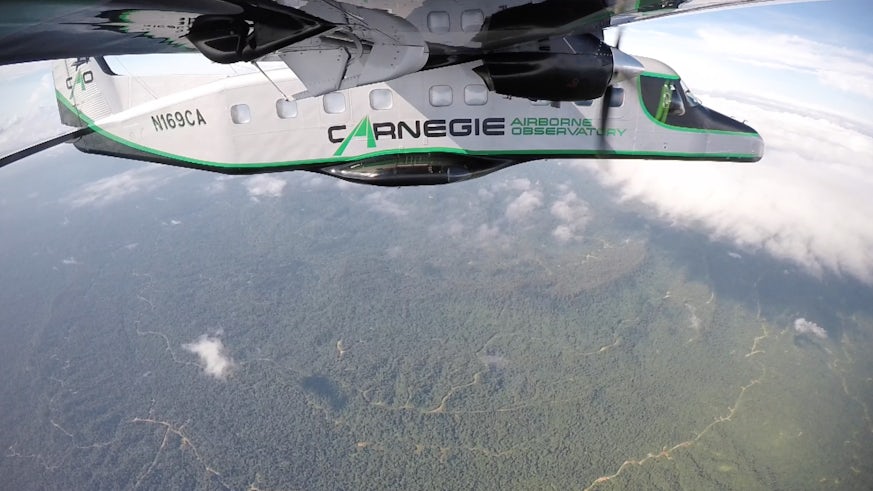Airborne laboratory uncovers vital elephant habitats from the sky
21 January 2020

Scientists in aeroplanes uncover crucial information about elephant movements through Borneo, helping develop a plan to protect the endangered species.
Collaborative research from Cardiff University, the Danau Girang Field Centre, Arizona State University and the South East Asia Rainforest Research Partnership has undertaken the broadest study of Bornean elephants to date, which has given new insights into their habitat choices.
There are around 1,500 Bornean elephants left in the wild, mostly concentrated in Sabah. Habitat loss has led to increasing elephant deaths, due to rises in conflicts between people and elephants, poaching, poisoning and crop raids.
To help safeguard the iconic Bornean species, conversation scientists fitted elephants with GPS collars and tracked them over seven years, observing how they travelled, to help develop initiatives to protect their pathways through habitats.
Professor Benoit Goossens, researcher at Cardiff University and Danau Girang Field Centre, said; “We need to give elephants the space they need to roam freely without coming into contact with people. We need to create protected wildlife corridors - areas of land that allow elephants to travel between their habitats safely.
“To create these paths, we needed to first understand how much space elephants need to roam as well as investigate the types of habitats that they prefer and want to avoid.”

The researchers used tracking collars and a laboratory in an aircraft, called a Global Airborne Observatory, to uncover information about the types of habitats the elephants frequented as well as where the elephants were traveling.
“We utilized a vast array of locational and remote sensing data to provide behavioural insight for elephant populations at severe risk of decline and even extinction,” said Dr Luke Evans, a postdoctoral researcher from the Arizona State University’s Centre for Global Discovery and Conservation Science.
The researchers discovered that elephants actively avoided urbanized areas, such as roads and villages, and moved more quickly and directly in areas with less vegetation.
"Our study showed overall active avoidance of urbanized areas by elephants despite increasing levels of human-elephant conflict throughout Sabah. This suggests that the increase in Bornean elephant mortality is not adequately explained without significant increases in incidences of active hunting and ivory poaching, as well as incidences of poisoning in agricultural landscapes.
“We also found that elephants preferred to travel along ridgelines, suggesting that these pathways should feature in future protected areas such as wildlife corridors.
“Through airborne and field-based observations, we have been able to provide a vital insight into the best practices for creating a plan to save this much-loved Bornean species,” said Professor Goossens.
The research study was published in the journal Global Ecology and Conservation and was funded by the Rainforest Trust, UN Development Programme, Avatar Alliance Foundation, RSPO, WWF, Morgan Family Foundation, Elephant Family, Houston Zoo, Mohamed bin Zayed Species Conservation Fund, the Asian Elephant Foundation, Columbus Zoo and Aquarium, Ocean Park Conservation Foundation Hong Kong and US Fish and Wildlife Service’s Asian Elephant Conservation Fund.